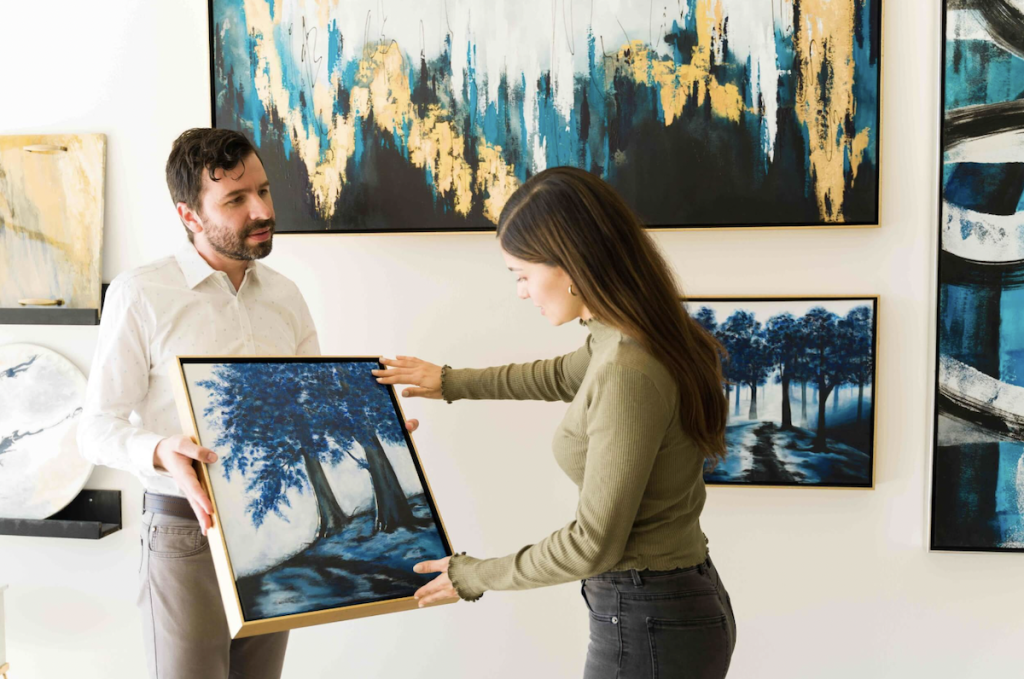Art auctions offer a captivating blend of culture, creativity, and the thrill of acquiring unique pieces that speak to your aesthetic sensibilities. Whether you’re a seasoned art collector or a novice enthusiast, finding a great art auction is crucial for a rewarding and enriching experience. This guide explores the key considerations to keep in mind, with a special emphasis on the vibrant and diverse world of Native American art.
1. Research the Auction Houses:
Start your journey by researching reputable art auction houses. Look for institutions with a strong track record, a history of successful auctions, and positive reviews from both buyers and sellers. Established houses often have a wide network, attracting high-quality artwork, including notable Native American pieces.
2. Diverse Art Selection:
A great art auction should boast a diverse selection of artworks across various genres, styles, and cultural backgrounds. This diversity ensures that you have a broad range of choices, allowing you to explore different artistic expressions. In the realm of Native American art, a comprehensive auction may showcase traditional crafts, contemporary works, and pieces from various tribes.
3. Expertise in Native American Art:
Look for auction houses that demonstrate expertise in Native American art. Knowledgeable specialists and curators within the auction house contribute to a more nuanced understanding of the artworks, providing accurate information on the artists, cultural significance, and historical context. This expertise ensures that you can make informed decisions when bidding on Native American pieces.
4. Transparent Auction Processes:
Transparency is key when engaging in art auctions. A great auction house should have clear and transparent processes, from registration and bidding to the final sale. Understanding the auctioneer’s terms, the buyer’s premiums, and any additional fees is essential for a smooth and transparent transaction.
5. Online and On-Site Options:
Consider whether the auction house offers both online and on-site bidding options. Online auctions provide convenience, allowing you to participate from anywhere in the world. However, on-site options offer a unique experience, allowing you to physically inspect the artworks and immerse yourself in the atmosphere of the auction house. Having both options widens your accessibility to diverse Native American art pieces.
6. Provenance and Authenticity:
Provenance, or the documented history of an artwork’s ownership, is crucial in the art world. A reputable auction house should provide clear provenance for each piece, ensuring that the artwork’s authenticity is verifiable. This is particularly significant when acquiring Native American art, where understanding the origins and history adds to the cultural appreciation of the piece.
7. Condition Reports:
Requesting and reviewing condition reports is essential, especially when considering the acquisition of Native American art. A reliable auction house will provide detailed condition reports for each artwork, outlining any signs of wear, damage, or restoration. This information is vital for making informed decisions and assessing the overall quality of the piece.
8. Auction House Reputation:
Reputation matters significantly in the art world. Research the reputation of the auction house within the art community and among collectors. A well-regarded auction house is more likely to attract high-quality artworks and reputable sellers, ensuring a curated and exceptional collection of Native American art.
9. Accessibility and Communication:
Consider the accessibility and communication practices of the auction house. A great auction house should be easily reachable for inquiries, providing timely and helpful responses. Clear communication channels enhance the overall experience and contribute to a sense of trust and confidence in the auction process.
10. Budget Considerations:
Establish a clear budget before delving into an art auction. Reputable auction houses cater to various budget ranges, allowing both seasoned collectors and new enthusiasts to find pieces that align with their financial considerations. Knowing your budget beforehand helps you focus on artwork within your means and avoid overextending financially.
11. Auction House Policies:
Familiarize yourself with the auction house’s policies, including payment terms, shipping options, and return policies. Understanding these aspects ensures a seamless and secure transaction. Pay attention to any specific policies related to Native American art, as certain pieces may have unique considerations.
12. Cultural Sensitivity:
When exploring Native American art, cultural sensitivity is paramount. A great art auction house should demonstrate respect for the cultural context and heritage of the artworks. This includes providing accurate cultural information, collaborating with Indigenous artists and communities, and ensuring that the sale of Native American art aligns with ethical standards.
13. Post-Auction Support:
Evaluate the post-auction support provided by the auction house. Whether it’s assistance with shipping, framing recommendations, or additional information on the acquired artworks, post-auction support contributes to a positive overall experience. A reliable auction house is committed to ensuring your satisfaction beyond the bidding process.
14. Attend Preview Events:
Whenever possible, attend preview events hosted by the auction house. These events offer an opportunity to view the artworks in person, interact with specialists, and gain a deeper understanding of the pieces you may be interested in. For Native American art, attending previews allows you to appreciate the craftsmanship and cultural significance of the works.
Conclusion
In conclusion, finding a great art auction involves a thoughtful exploration of reputable auction houses, diverse art selections, and a commitment to transparency and authenticity. When specifically considering Native American art, these considerations take on an additional layer of cultural appreciation and respect for the rich heritage embedded in each piece.
Whether you’re drawn to traditional Native American crafts, contemporary expressions, or works from specific tribes, a great art auction

